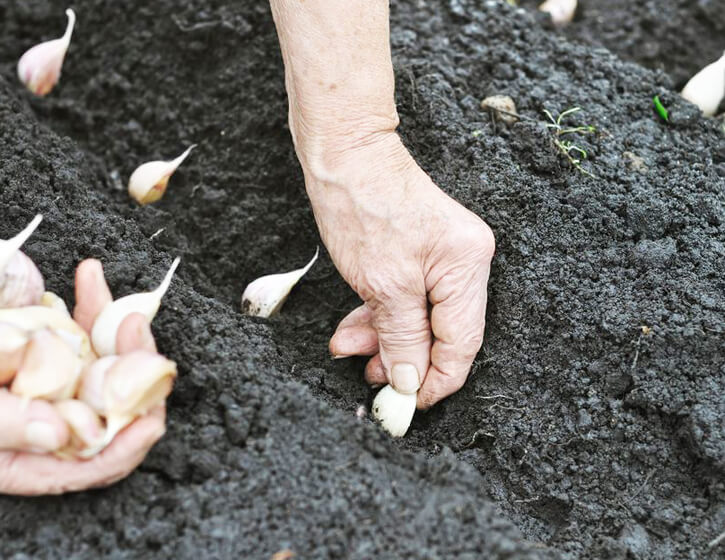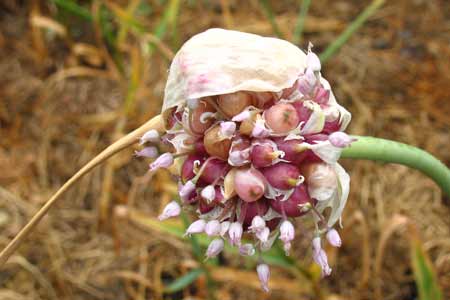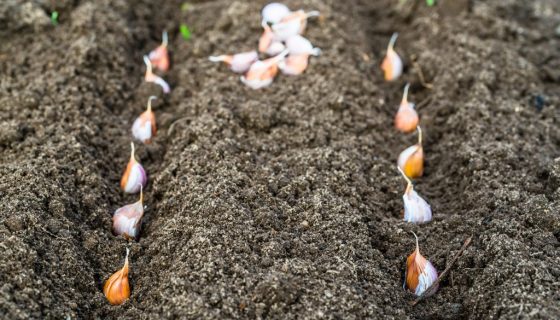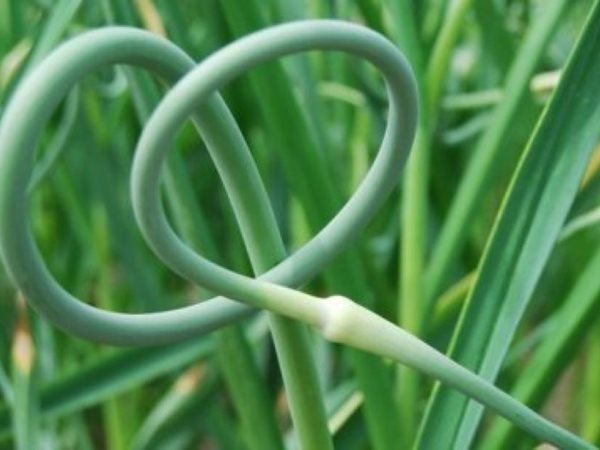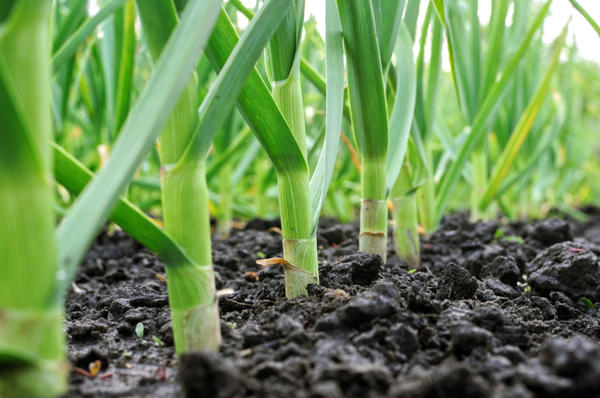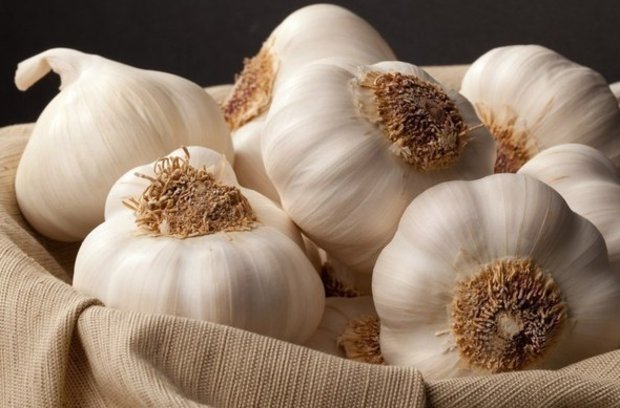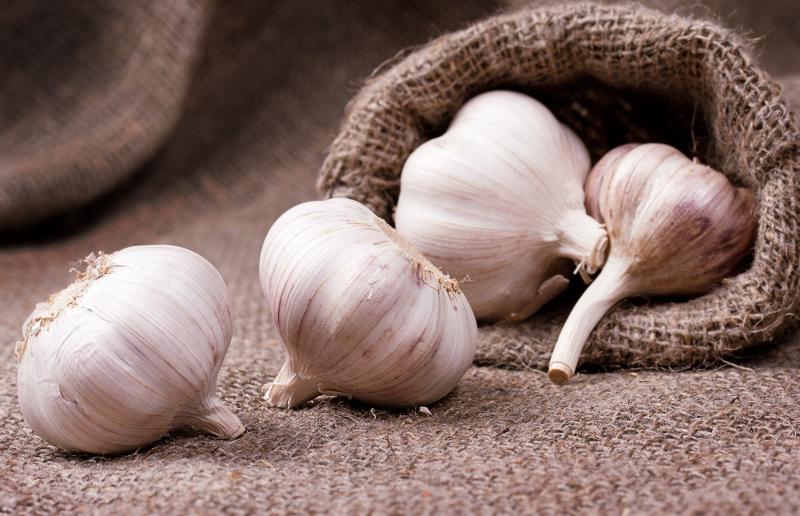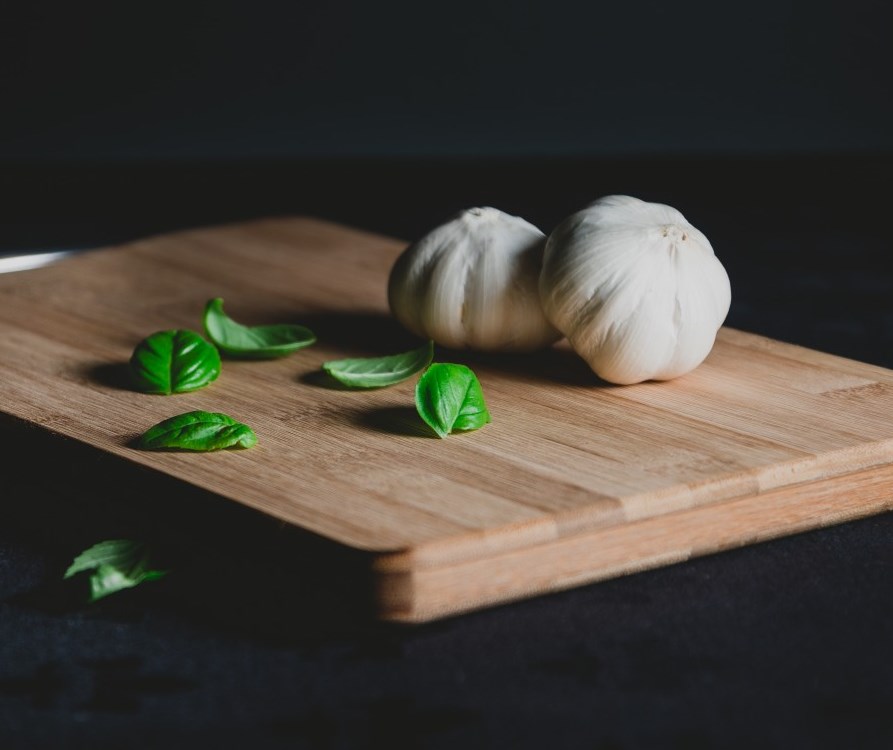Planting winter garlic is always a risk. What if the winter will be very harsh and little snow? Or will the melt water stay on the beds for so long that the planting material will disappear? Today, for many gardeners and gardeners, planting garlic in the spring seems to be a reasonable option to eliminate these risks.
Content
What season is it customary to carry out work
Growing garlic in the winter way is a tradition among Russian gardeners. In the spring, when there is so much work that you don’t know what to grab onto, it’s nice to know that some plantings have already been made in the fall. In addition, the first greens that can be used for salads appear very quickly, and harvesting can also be started early. It is also believed that podwinny garlic has a brighter taste than spring garlic.
The spring planting of garlic, which is a wonder for many owners, has its advantages. Seedlings appear amicably, since the planting material gets into a sufficiently warm soil. Plants get sick less during the growing season, the harvested crop is well stored.
What types of garlic are planted in spring
The division of varieties into shooters and non-shooters is, as a rule, a division into winter and spring varieties. The former tolerate winter cold well, the latter are less frost-resistant, and it is they who are planted in spring.
Spring garlic differs from winter garlic in the appearance of the bulb: it does not have a central arrow, and the cloves are small, located in several rows. In each of the denticles, no matter how small it is, there are already rudiments of future leaves.
Breeders have bred many varieties of spring garlic, grown to obtain a full-fledged bulb - per head. For central Russia, these are:
- Gulliver - medium late, disease resistant, fruitful, bulbs weigh up to 40 g;
- Elenovsky - mid-season, the weight of individual cloves can be 8 g, and a whole bulb - 50 g;
- Ershovsky - mid-season, high-yielding, in one bulb weighing 35 g there can be up to 25 pieces of cloves;
- Sochi 56 - mid-season, bulbs weigh up to 50 g;
- Victorio - differs from other varieties with a wax coating on the leaves, fruitful, well stored;
- Flavor is the oldest of the varieties, but is still popular due to its high yield and good keeping quality of the bulbs during storage.
Any of the listed varieties can be grown in the northern regions, since they were originally intended for them, but then they were successfully acclimatized in central Russia. Specifically for Siberians, the spring mid-season variety Novosibirsk is intended, it manages to ripen in a record short time - from 75 to 85 days.
Gardeners are wondering if winter garlic cloves can be used for spring plantings. Yes, you can, but the result will upset those who would like to get large bulbs in the fall.Unfortunately, they will grow small or they will not be at all: the plant, as experts say, will go into the arrow. But winter varieties give a very good green mass, it can be used as a vitamin supplement in various dishes.
What landing methods are there
The most common planting method is with teeth. The result of such plantings is large heads of garlic. But not all owners of orchards know how to use bulbs for planting, but it is imperative to master this method: it makes it possible to get your own high-quality, and most importantly, healthy planting material.
The owners usually get rid of most of the arrows in late May - early June. This is done so that the arrows do not take away from the plant the forces necessary to form the bulb. It is still advisable to leave a couple of arrows (the strongest) - it is on them that the bulbs with tiny teeth-seeds ripen.
At the end of June, the film with which they were covered begins to crack - this means that the future planting material is ripe. The arrows must be cut, tied and hung to dry in a well-ventilated dark room (it is impossible in the sun, under the influence of bright rays the seeds "turn glass" and lose their germination). When they are dry, the bulbs can be separated from the inflorescences, and then used for planting - pre-winter or spring.
Interesting fact: from each arrow you can get from 20 to 100 onions. If you use an ordinary large onion for planting, then there will be from 4 to 10 cloves in it, which means that for the future harvest you will have to spend the lion's share of what has just been harvested. The benefits of using bulbs are obvious, especially when it comes to varietal garlic, which you would like to see more on your site (the varietal qualities of seeds from bulbs, by the way, are completely preserved).
Experts explain: every year garlic bulbs become smaller and smaller if propagated by cloves from the same plant. Garlic needs rejuvenation every 3-5 years. This problem can be solved using bulbs.
Dates of planting garlic in spring, depending on the region
Garlic is a frost-resistant culture. The timing of its planting in any of the Russian regions is determined according to general rules: as soon as the snow melts and the earth warms up to +6 degrees, work can begin. In the Kuban it will be the end of the first decade of March, in the Moscow region - the end of April, in Siberia and the Urals - the first decade of May.
First, the plant forms roots, and at a soil temperature of 8-10 degrees, the aerial part of the garlic will grow. It is impossible to delay planting: melt water may dry up (and garlic loves moisture) and the plant will wither, there is also a danger that the bulb simply does not have time to ripen in the short period of time that will be allotted to it.
According to the observations of experts, if you plant spring garlic when the air temperature steadily goes beyond +5 degrees, then you can not wait for the bulbs in the fall - the garlic will increase the green mass and nothing more.
Soil preparation and outdoor planting instructions
It is not recommended to plant garlic on the same garden bed for several years - the yield will certainly decrease. It is desirable that zucchini, peas, cabbage were the predecessors of garlic.
Spring garlic is planted on the heads in well-prepared soil. It should be loose so that the water circulates through it freely, nutritious - for this, humus or compost is introduced into it a couple of weeks before planting. When 2 days remain before planting, the soil in the garden will need to be watered with a solution of sodium chloride (1 glass per 10 liters of water). This procedure has two functions: salt will protect future plants from the pest - onion flies, and also accelerate the dissolution of nutrients so that it is easier for the roots to absorb them.
The planting material is prepared as follows: the heads of garlic are divided into cloves, the damaged ones are discarded. Wrapped in a damp cloth and kept in a cool place for several days, or in the refrigerator. 0.5 days before planting, the cloves are dipped into a container with warm water. It will be useful to treat planting materials with growth stimulants, which can be bought in specialized stores for gardeners.
And here's how to plant garlic.
- Prepare the rows, the distance between them is 20 cm. In each row (after 6 cm) mark the holes. If the variety is large-fruited, the distance between the holes should be increased to 10 cm.
- In each hole, lower the clove with the bottom down, the depth is no more than 2–3 cm. You cannot press in the clove, you can injure the roots.
- Sprinkle the planting with earth.
- Sprinkle with plenty of water.
- Apply fertilizer (e.g. ammonium sulfate).
Garlic shoots should be expected after 14 days.
When planting garlic on the arrow (to obtain seed), the cloves are especially meticulously selected - they should be the largest. The landing site must be sunny. Planting is carried out as usual, but the distance between the holes is increased - future plants should feel free in the garden.
And here is how experienced gardeners grow garlic from seeds. The area allocated for planting is mulched with two or three layers of newspapers, which must be watered. The site is conditionally divided into rows, holes are made in them, a tiny tooth is lowered into each. Then the newspapers are covered with earth (the layer must be thin so that the plants have enough strength to overcome it). Thanks to this technique, it is possible to get rid of weeds that could destroy the plantings.
How to plant spring garlic: video
How to care for a planted vegetable
Caring for the planting of garlic is simple, but it should be regular:
- watering is necessary (water temperature is from 15 to 20 degrees), but their excess can injure the roots, watering is completed 2 weeks before harvesting;
- potash and phosphorus fertilizers are used as top dressing;
- the earth is loosened (after watering it is mandatory) so that air circulation is not disturbed;
- get rid of weeds, if this is not done, full-fledged bulbs will not form;
- extra arrows are removed, leaving only those from which the seeds will be obtained;
- planting, if such a need arises, protects against pests and diseases (one of the most common is fusarium).
How to lay a finished crop for use next year
To preserve garlic until spring and use it as a planting material, you need to create a number of conditions. The room should be well ventilated, the temperature should be from +18 to +20 degrees. The minimum humidity is 60 percent, if the air is too dry, the bulbs will disintegrate into cloves and dry out.
Some owners store seed garlic in boxes made of thin strips. According to experienced gardeners, it is much safer to keep them in bags sewn from dense fabric, in which, in addition to garlic, onion peels are added. Another option is possible: lubricate the garlic heads with vegetable oil with iodine with a cotton swab (at the rate of 10 g per 0.5 l of oil).
If there is a lot of planting material, they do this: they pour garlic into a bag and bury it to a depth of 50 cm. Foil, compost, leaves are used as insulation - this is a reliable protection against winter frosts.
On how to correctly lay garlic for storage for food:https://flowers.bigbadmole.com/en/ovoschi/kak-hranit-chesnok.html
Having mastered the method of spring planting of garlic, the gardener not only grows a useful product, but also provides himself with his own high quality planting material.

